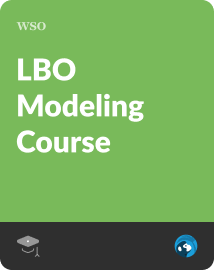Institutional Buyout (IBO)
Refers to an institutional investor’s acquisition of a controlling interest in a firm.
What Is an Institutional Buyout (IBO)?
An institutional buyout (IBO) is an institutional investor’s acquisition of a controlling interest in a firm. Institutional investors include private equity or venture capital firms, as well as financial institutions like commercial banks.
Institutional investors specialize in particular industries and usually have a preferred deal size. These investors also establish a set time frame (usually five to seven years) and a projected investment return hurdle for the deal.
A hurdle rate is the minimum rate of return on an investment that will cover its costs.
Often, institutional buyouts are a way to make a public company private. Other IBOs may involve private buyouts by direct sales.
The opposite of an institutional buyout is a management buyout (MBO). In a management buyout, a company’s current management acquires some or all of the company.
Like other types of acquisitions, IBOs can be friendly when the transaction is approved by the company’s current owner(s). However, an IBO can also be hostile if the transaction does not align with the owner(s)’s objectives.
- An IBO involves institutional investors, like private equity firms, acquiring a controlling interest in a company. These investors specialize in specific industries and set a timeframe and return expectations for the deal.
- The process involves identifying a target company, structuring the deal offer, making an offer to the target company's shareholders, managing the company post-acquisition to increase its value, and eventually exiting the investment.
- An LBO is a type of IBO that relies heavily on borrowed funds, measured by the debt-to-EBITDA ratio. LBOs are high-risk, high-reward strategies typically carried out by private equity firms.
- Target companies for IBOs often exhibit underperformance in their industry, have additional debt capacity, low capital spending requirements, may require replacement of old management, and have a timeframe for value enhancement before exiting the investment.
Understanding institutional buyouts
As mentioned, these may be friendly when the transaction cooperates with the existing company owner(s). However, the transaction may be hostile when it bypasses the existing management’s objections.
After an IBO occurs, the institutional investor may decide to preserve the company’s current management. More often, however, the institutional investor chooses to hire new management and may decide to give them stakes in the company.
Private equity companies that are involved in buyouts typically structure and execute the deal, as well as hire new managers.
In many cases, institutional investors opt to replace the existing management team with new executives as part of their value creation strategy. This transition may involve recruiting seasoned professionals with relevant industry expertise to lead the company's operations.
Institutional buyers seek out deals of their preferred size and focus on specific industries.
A company may be a desirable buyout target if it carries a lot of unused debt, may be underperforming but still generates a lot of cash, and has consistent cash flows with low capital expenditure requirements.
Usually, an acquiring buyer will look to get rid of its stake in the company through a sale to a strategic buyer (e.g., an industry competitor) or an initial public offering (IPO).
An IPO occurs when a private company first sells its shares to the public. It is a transition from private ownership to public ownership, commonly called “going public.”
Stages of Institutional Buyouts
The stages of institutional buyouts are as follows:
1. Identify the target company
First, the institutional investor must find a suitable target company. Then, the institutional buyer can establish their requirements for the desired target company.
Once the criteria are chosen, the institutional buyer researches and analyzes appropriate companies for a buyout.
2. Structure the deal offer
Once the institutional buyer finds the ideal company for the IBO, it needs to choose an appropriate deal type. For instance, the institutional buyer can choose what type of financing it will use for the acquisition of a stake in the company (i.e., loan or no loan).
The buyer also needs to set a price that it will pay current shareholders of the target company, as well as the size of the premium. The investor will also take into consideration whether or not it desires to keep the current management or replace it.
From the outset, institutional investors plan their exit strategies to realize returns on their investment. This may involve preparing the company for a potential sale to strategic buyers or positioning it for an Initial Public Offering (IPO) to access public capital markets.
3. Make an offer to the target company
Once the deal is structured, the institutional investor will propose an offer to the current shareholders of the target company. If the offer is agreed upon, either whole or partial ownership of the company will be transferred to the investor.
4. Manage the target company
After ownership of the target, the company is transferred to the buyer; the company’s new owners will usually start changing its operations to increase its value.
Managers of the company will oversee the company’s development in accordance with the investor’s chosen path.
5. Exit the investment
Typically, institutional buyers maintain investment for five to seven years. Once the holding period is up, the buyer will exit the investment in order to obtain the appreciated value. Selling the stake to a strategic buyer or through an IPO are common strategies for exiting.
If a strategic buyer buys the target company, it means that the firm was acquired by a company that operated in the same industry. On the other hand, an IPO may be ideal if the institutional buyer predicts more growth opportunities for the target company.
IBO vs. Leveraged Buyouts (LBO)
A leveraged buyout (LBO) is a type of institutional buyout that involves using a large amount of financial leverage. This means that an LBO is made using mostly borrowed funds.
For buyouts, leverage is measured using the debt-to-EBITDA ratio. If an LBO has a higher degree of leverage, the deal is riskier and may face failure or bankruptcy.
This risk can be mitigated if the new owners of the acquired company are disciplined in making payments and business improvements that increase efficiency and reduce costs. But, of course, all of this is in order to pay off the debt used to fund the acquisition.
Institutional Buyouts often involve financial engineering techniques aimed at optimizing the company's capital structure and enhancing shareholder value.
Private equity firms typically carry out leveraged buyouts. They usually occur when the target company has significant free cash flow, adequate net tangible assets, and low levels of debt.
When this is the case, the buyer borrows against the target’s balance sheet and uses the loaned funds for the acquisition of the target.
Leveraged buyouts are considered to be high-risk, high-reward investment strategies. This is because the acquisition of a company using a large amount of debt must achieve high returns and cash flows to pay interest on the borrowed funds.
Key Features of a Target Company
Institutions or investors who carry out IBOs generally focus on one industry and target a specific size. Features of a target company tend to vary among industries; however, some key characteristics remain constant.
1. Underperformance
A good target company for an IBO is usually one that is underperforming in its own industry. Despite its underperformance, the target should have considerable cash generation and consistent cash flows. These firms are ideal because there is an opportunity to cut costs and increase earnings.
2. Additional debt capacity
A target company must carry an additional debt capacity if an institutional investor is looking to carry out a leveraged buyout.
3. Low capital spending requirements
In addition to a high debt capacity, low capital spending requirements are desirable for a leveraged buyout target.
IBOs provide access to significant capital, strategic guidance, networks, and potential operational improvements. They aim to create value for both investors and shareholders by enhancing the target company's overall performance and positioning it for long-term success.
4. Replacement of old management team
Oftentimes, an IBO results in the replacement of the target company’s old management team. Sometimes, the target company may try to stop the transaction due to this reason. As a result, many IBOs are carried out as hostile takeovers.
5. Timeframe
Institutional investors typically establish an investment horizon of five to seven years. The investors’ goal is to increase the target’s value during the holding period through optimizing and sometimes restructuring operations.
6. Sale of controlling interest
At the end of the established time period, the institutional buyer exits through a sale of its controlling interest in the company to another investor, through an IPO, etc. Typically, the sale is made to a strategic buyer.
Advantages Of Institutional Buyouts
Some of the advantages of institutional buyouts are as follows:
1. Access to Capital
Institutional buyouts provide target companies with access to significant capital from institutional investors such as private equity firms.
This influx of capital can support business expansion, investment in new technologies, and strategic initiatives to drive growth.
2. Strategic Guidance
Institutional investors bring strategic expertise and industry knowledge to the table, offering valuable guidance and insights to the target company's management team.
3. Access to Networks
Institutional investors have extensive networks of industry contacts, business partners, and potential customers or clients.
This network can facilitate strategic partnerships, collaborations, and business development opportunities for the target company, enabling it to expand its market reach and access new opportunities.
IBOs may result in the loss of independence for the target company, conflicts of interest, high transaction costs, and regulatory scrutiny. They can also lead to restructuring and layoffs, disrupting company culture and stakeholder relationships.
4. Financial Flexibility
Institutional buyouts can provide financial flexibility to target companies by restructuring their capital and debt obligations.
5. Value Creation
Institutional buyouts are often aimed at creating value for both investors and shareholders.
By implementing strategic initiatives, operational enhancements, and growth strategies, institutional buyers seek to enhance the target company's overall value and position it for long-term success.
Disadvantages Of Institutional Buyouts
Like any other method, institutional buyouts has its own share of disadvantages. Some of its drawbacks are as follows:
1. Restructuring and Layoffs
In pursuit of operational efficiencies and cost savings, institutional investors may implement restructuring initiatives that result in layoffs, workforce reductions, and organizational changes.
These actions can negatively impact employee morale, disrupt company culture, and damage stakeholder relationships.
2. Conflict of Interest
Institutional investors may have conflicting interests with other stakeholders, such as employees, customers, and suppliers.
Their primary focus on generating returns for their investors may clash with the broader interests of the company's stakeholders, leading to tensions and conflicts.
The success of an IBO depends heavily on the dynamics of the target company's industry. Institutional investors assess market trends, competitive landscape, technological advancements, and regulatory changes to inform their investment decisions and value creation strategies.
3. Loss of Independence
Institutional buyouts can result in the loss of the target company's independence and autonomy.
The company may become subject to the influence and control of the institutional investor, impacting its corporate culture, values, and strategic decision-making processes.
4. High Transaction Costs
The process of executing an institutional buyout involves significant transaction costs, including legal fees, advisory fees, due diligence expenses, and financing costs.
These costs can be substantial and may reduce the overall value generated by the transaction.
5. Regulatory Scrutiny
Institutional buyouts may attract regulatory scrutiny and public attention, especially if they involve significant layoffs, asset sales, or changes in corporate governance.
Alternative Of Institutional Buyouts (IBOs)
Exploring alternative strategies to Institutional Buyouts (IBOs) can provide companies with diverse avenues for growth and capital acquisition.
From joint ventures to debt financing, various options offer unique benefits and considerations for businesses seeking alternatives to traditional buyout models. Some of them are highlighted are below:
1. Joint Ventures
Joint ventures involve two or more companies pooling their resources and expertise to pursue a specific project or venture together.
Unlike institutional buyouts, joint ventures allow companies to maintain their independence while sharing risks and rewards with their partners.
2. Debt Financing
Instead of selling equity to institutional investors, companies can raise capital through debt financing, such as bank loans, bonds, or lines of credit.
In many cases, institutional investors opt to replace the existing management team with new executives as part of their value creation strategy. This transition may involve recruiting seasoned professionals with relevant industry expertise to lead the company's operations.
3. Crowdfunding
Crowdfunding platforms provide an alternative source of capital for companies looking to raise funds without relying on institutional investors. Through crowdfunding, companies can raise capital from a large number of individual investors in exchange for equity, debt, or rewards.
4. Strategic Acquisitions
Strategic acquisitions allow companies to expand their market presence, acquire new technologies or capabilities, and strengthen their competitive position.
5. Bootstrapping
Bootstrapping involves financing a company's growth and operations through internal resources, reinvested profits, and minimal external funding.
Conclusion
Institutional buyouts represent a strategic avenue for companies to access significant capital, expertise, and strategic guidance from institutional investors such as private equity firms.
These transactions involve the acquisition of a controlling interest in a company by institutional investors, who specialize in specific industries and set predetermined investment horizons and return expectations.
While institutional buyouts offer numerous advantages, including access to capital, strategic guidance, and potential operational improvements, they also come with certain disadvantages, such as loss of independence, potential conflicts of interest, and high transaction costs.
By thoroughly assessing the implications and trade-offs associated with each option, companies can determine the most suitable course of action to achieve their objectives and maximize shareholder value.
Regardless of the chosen path, companies must prioritize alignment with their strategic goals, prudent risk management, and effective governance to navigate the complexities of corporate finance and drive sustainable long-term growth.
Free Resources
To continue learning and advancing your career, check out these additional helpful WSO resources:




or Want to Sign up with your social account?